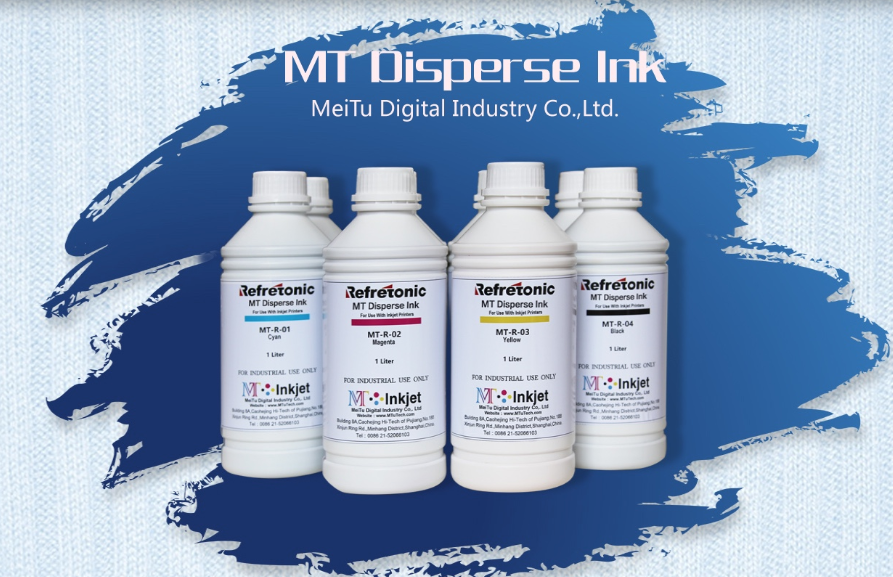Textile printers are always looking for ways to improve the quality of their designs and fabrics. An important element of design quality is the type of ink that is used for printing. The last years, there has been a high demand for high-quality inks that are easy to print with and are also less damaging to the environment. How do you find the type of ink that best fits your production process when there are so many different types of ink out there? In this blog, I explain the different types of ink to you and discuss the advantages and disadvantages of each type to make your choice an easier one.
1. Reactive inks
Reactive inks are the most commonly used inks in the textile industry nowadays. Especially among digital textile printers, reactive inks are very popular. The ideal application of reactive inks is printing on cotton. However, reactive inks can also be used when printing on silk and wool.
![reactive-ink-banner3-[已恢复]](/uploads/images/201908/f8b3f21a55264423b43014ec6cdb88a2.jpg)
Two great advantages of using of reactive inks for textile printing is the high-quality of the colors and the high wash fastnesses. The best color quality is reached when using reactive inks to print on cotton or viscose. When printing on silk or wool the colors can become less bright and intense. However, especially for top-level fashion brands, the high wash fastness is an important advantage of reactive inks. A high wash fastness means textiles can be washed often without losing its color.
2. Acid inks
Acid inks are known for its vibrant colors, even when printing on materials which do not retain colors very easily. For that reason, acids inks are often used for printing wool and silk. With acid inks, you get a high level of color brilliance when printing on these type of materials. Besides wool and silk, acid inks are regularly used for printing swim clothing, which is often made of lycra. First of all because of its high color brilliance, but also because acid inks have a high tolerance for chlorine and salt water.
3. Disperse inks
Disperse inks are the most commonly used inks in conventional printing on polyester fabrics. With disperse printing, the ink is sprayed directly on the textile after which it is being steamed and washed. The steaming process opens up the fibers allowing the ink to fully penetrate the textile. After the steaming process, the fiber closes again and the colors are locked into the material. This results in a very high color brilliance and a high wash fastness. Nowadays, disperse ink are the most commonly used inks in conventional textile printing.

The last couple of years, polyester has become more and more popular within the fashion industry, which means there was a high demand for fast printing with disperse inks on this fabric. A problem, since experience showed that disperse inks do not work very well when printing with high-speed printers. Therefore many textile printers that want to print polyesters digital went to sublimation printing through paper transfer.
4. Sublimation inks
When digital textile printing became more and more popular, a new type of printing emerged within the digital textile industry: transfer printing or sublimation printing. Sublimation printing means that you print the sublimation ink onto a piece of paper after which you put this paper with the fabric in a calander and under high temperature and pressure the ink changes from liquid to gas (sublimates). This gas easily penetrates the polyester fibers. After removing the pressure and lowering the temperature, the colors are locked into the fabric.
An advantage of using sublimation inks is that you do not need to steam and wash the textile after printing. For this reason, this technique is less environmentally damaging, easier and cheaper than other printing methods. On top of that, sublimation ink can be used for digital printing which means you can print large quantities at a faster rate.
Recently, textile printers have successfully printed direct to the polyester fabric with the same sublimation inks. It requires a more expensive printer as a belt system to hold the fabric is needed, but it saves the paper costs and you still do not need to steam and wash. In general sublimation printing on polyester results in somewhat lower fastnesses than printing with direct disperse inks. But in the fast fashion world that is an acceptable compromise for sustainability (no need to steam and wash).
5. Pigment inks
While in conventional printing around 50% of all fabrics are printed with pigment inks, it is logical that many customers ask for ‘digital pigment printing’. In fact, they are looking for an easy process with acceptable color and a very low price. In digital, all those advantages cannot (yet) be realized. To achieve a sowewhat acceptable color yield, a pre-treatment is needed, making the process more complicated. Because the pigment particles need to be very small to be able to go through an inkjet head, the process to achieve those small particles makes the inks more expensive than for instance reactive inks. And still, the risk of clogging heads remains considerably larger as the pigment particles like to stick to everything. Therefore, the digital pigment applications are restricted to very small niche markets where other solutions cannot help (f.i. a 50% cotton 50% polyester fabric).
